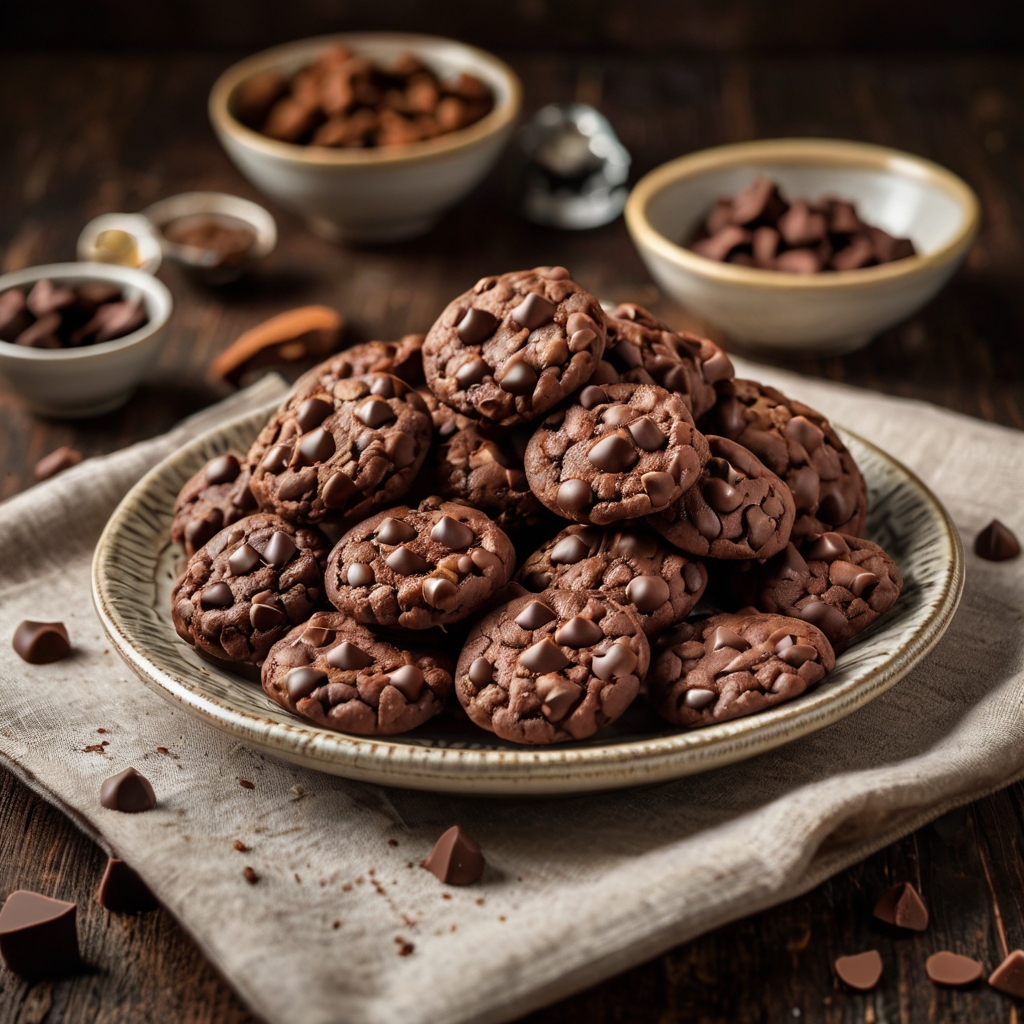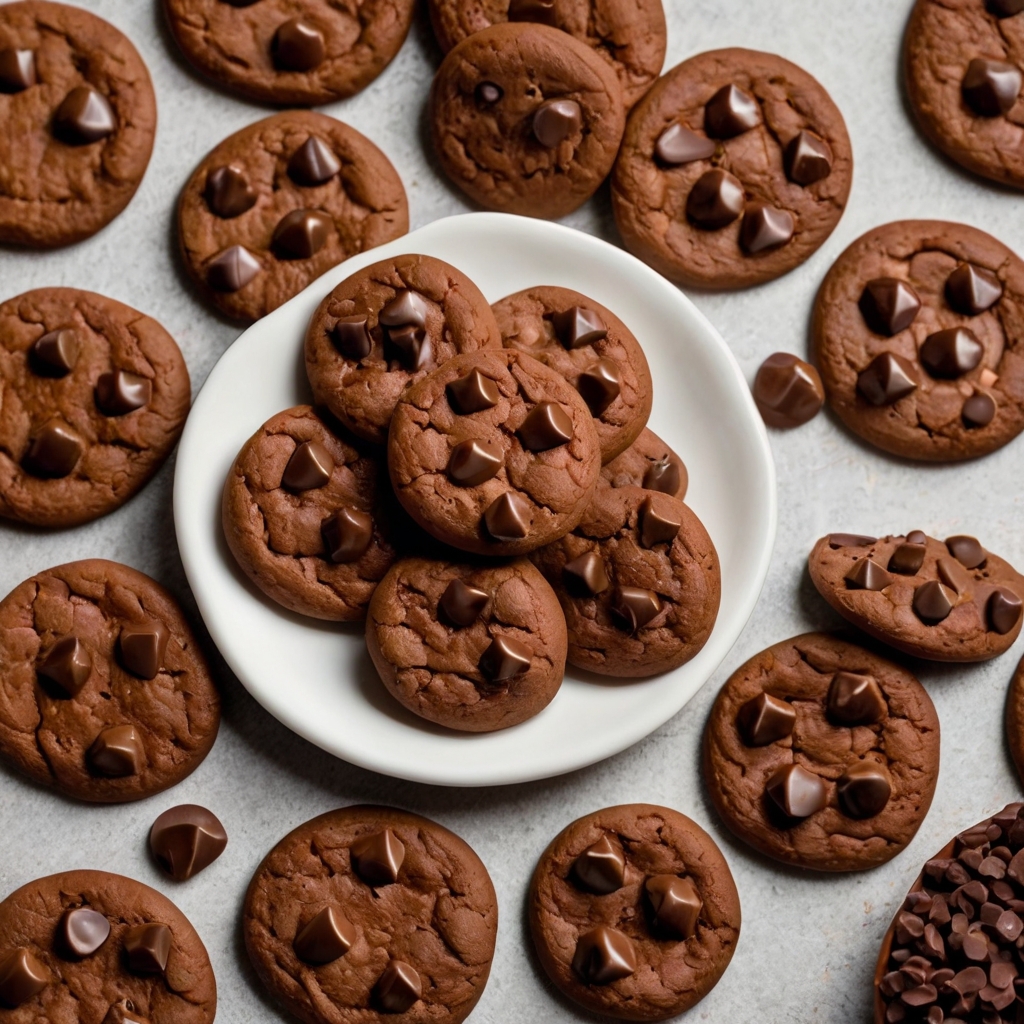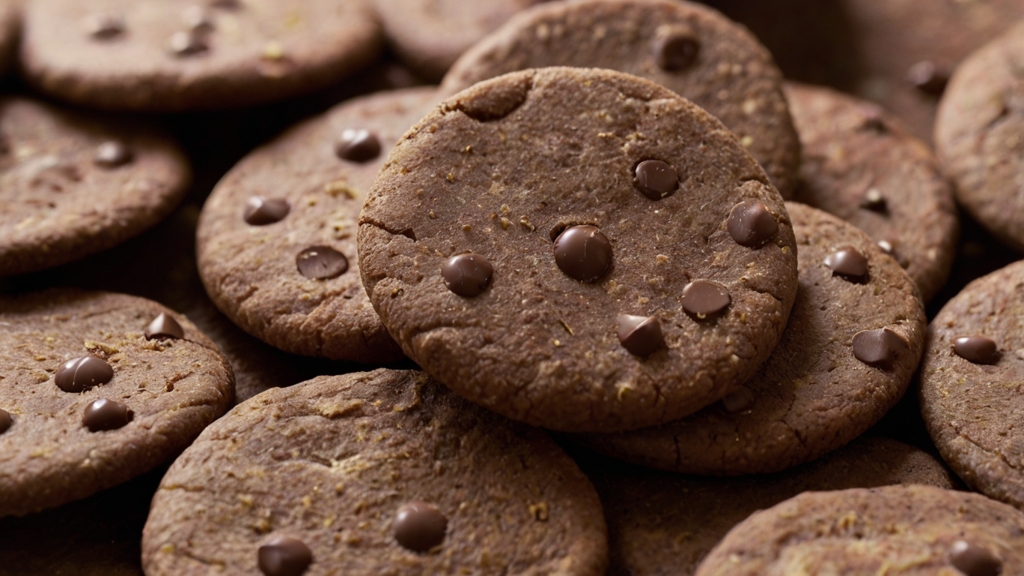Baking Perfect Chocolate Chip Cookies: From a Chef’s Perspective

Hi, my name is Chef Marcus. I’ve been a pastry chef and culinary instructor for over 20 years, and if there’s one recipe that gets everyone excited — from first-time bakers to seasoned pros — it’s the humble chocolate chip cookie. But let me tell you: there’s nothing humble about a truly great one.
This guide is for anyone who’s ever wondered why their cookies came out too flat, too dry, too doughy, or simply lacked that magic. I’m going to walk you through the art and science of crafting the perfect chocolate chip cookie — with pro techniques, easy-to-follow recipes, and flavor hacks you’ll want to bookmark forever.
Perfect Chocolate Chip Cookie?
Origins of the Classic Cookie

The chocolate chip cookie was born out of a happy accident. In the 1930s, Ruth Wakefield, owner of the Toll House Inn in Massachusetts, added chopped chocolate to her butter cookie dough thinking it would melt into the mix. It didn’t. Instead, she created what would become the most iconic cookie in America. Nestlé later bought the rights to her recipe — and the rest is baking history.
As a chef, I love that this cookie is rooted in improvisation. That spirit continues today as bakers experiment with textures, mix-ins, and techniques.
Key Ingredients That Impact Texture and Flavor
Let’s break down the core components of the dough and how they affect your final result.
Butter vs. Margarine
Butter is non-negotiable in my kitchen. It adds depth, richness, and structure. Unsalted is ideal, so you control the salt levels. Margarine, while usable, lacks flavor and can lead to a softer, flatter cookie due to its higher water content.
| Ingredient | Flavor Impact | Texture | Pro Tip |
| Butter | Rich, creamy | Chewy/crisp edges | Use room temperature |
| Margarine | Neutral | Often greasy/flat | Avoid unless dairy-free |
White Sugar vs. Brown Sugar
This is one of the biggest levers you can pull to tweak texture and moisture.
| Sugar Type | Sweetness | Texture Result | Use More Of… |
| White Sugar | Clean, sharp | Crisper cookie | If you want snap |
| Brown Sugar | Deep, molasses | Chewy, moist | If you want chew |
I like a 60/40 split favoring brown sugar for that classic balance.
Egg Yolks and Egg Whites—What’s the Difference?
Eggs bind your dough and affect spread and tenderness. Yolks are fatty and add richness; whites create structure.
- 1 whole egg = balance
- 1 yolk only = denser, fudgier cookie
- 1 white only = dry, more cakey
For a bakery-style chew, try 1 whole egg + 1 extra yolk. Trust me.
Choosing the Right Chocolate Chips
This part seems simple — but it’s where most home bakers settle instead of elevate. Let’s fix that.
Semi-Sweet vs. Dark vs. Milk
| Type | Flavor | Sweetness | Best Use |
| Semi-Sweet | Balanced | Moderate | Classic cookies |
| Dark (60–72%) | Bold, bitter | Low | Gourmet or low-sugar recipes |
| Milk Chocolate | Creamy | High | Kids’ cookies, sweeter results |
Dark chocolate creates a more luxurious, grown-up cookie. I use it in 70% of my batches.
Best Brands of Chocolate Chips for Baking
Here’s what I reach for in my kitchen:
| Brand | Best Feature |
| Ghirardelli | Melt + flavor balance |
| Guittard | Deep cocoa taste |
| Nestlé Toll House | Traditional, good texture |
Premium brands melt better and coat the tongue more fully.
Can You Use Chocolate Chunks or Bars Instead?
Absolutely — and sometimes, you should. Chopping a high-quality bar gives you uneven pieces, which melt into gorgeous pockets of chocolate. I often mix 1/2 chips, 1/2 chunks for layered texture.
How to Bake Chocolate Chip Cookies Like a Pro
Classic Chocolate Chip Cookie Recipe
Here’s my go-to base recipe. It’s forgiving, beginner-friendly, and has that chewy/crispy golden ratio.
Ingredients (Yields ~24 cookies):
| Ingredient | Amount |
| Unsalted butter (softened) | 1 cup (2 sticks) |
| Brown sugar | 3/4 cup |
| White sugar | 1/2 cup |
| Egg | 1 + 1 yolk |
| Vanilla extract | 2 tsp |
| All-purpose flour | 2 1/4 cups |
| Baking soda | 1 tsp |
| Salt | 1/2 tsp |
| Chocolate chips | 2 cups |
Instructions:
- Cream butter + sugars until fluffy (2–3 mins).
- Add egg, yolk, and vanilla. Mix until smooth.
- Whisk dry ingredients separately; add to wet.
- Fold in chocolate.
- Chill dough 30–60 mins.
- Scoop onto parchment-lined tray.
- Bake at 350°F for 10–12 mins.
How Long to Chill Dough (And Why It Matters)
Chilling firms the fat and hydrates the flour. It prevents overspreading and boosts flavor.
| Chill Time | Result |
| No chill | Soft, flatter cookies |
| 30 minutes | Improved texture |
| 24 hours | Deep caramelized flavor |

Baking Time and Temperature Tips
- 350°F is ideal. Any hotter and edges burn before the center cooks.
- Rotate tray halfway for even browning.
How to Know When They’re Done
Look for golden edges and slightly soft centers. Don’t overbake — they’ll continue to cook as they cool.
Common Mistakes and How to Avoid Them
Cookies Too Flat or Too Puffy
| Issue | Cause | Fix |
| Too flat | Warm dough, too much sugar | Chill dough, add flour |
| Too puffy | Too much flour, cold oven | Weigh ingredients, preheat well |
Dry or Overbaked Cookies
- Bake time too long
- Overmixed dough
Solution: Stop baking when they look slightly underdone. Let them rest on the tray 5 minutes.
Uneven Chips Distribution
- Always fold, never stir.
- If chips cluster at bottom, use a spatula to lift and redistribute.
Chocolate Chip Cookie Variations to Try
Chewy Chocolate Chip Cookies
If chewy is your goal, moisture is your best friend. I tweak my base recipe by increasing brown sugar to 1 cup and adding a tablespoon of honey or molasses. I also underbake by about a minute — just until the edges are set and the centers are barely golden.
Pro tip: Replace one whole egg with one yolk + one tablespoon of milk for added chew.
Crispy Thin Chocolate Chip Cookies
Want that café-style cookie with snap? Use melted butter, all white sugar, and skip the chill time. Spread is your ally here.
| Change | Effect |
| Melted butter | Encourages spreading |
| White sugar only | Promotes crispiness |
| Thin dough balls | Bake flatter cookies |
Bake at 375°F for 9–11 minutes, and they’ll come out like golden discs of joy.
Gluten-Free or Vegan Chocolate Chip Options
You can still get incredible results without wheat or dairy. Here’s how I do both:
For Gluten-Free:
- Use a 1:1 gluten-free baking flour (with xanthan gum).
- Let the dough rest 30 minutes longer so flours hydrate fully.
For Vegan:
- Swap butter with vegan baking sticks (avoid coconut oil if you don’t want spreading).
- Replace egg with a flax egg (1 tbsp ground flax + 3 tbsp water).
The flavor holds up. The texture? Unbelievably close to the original.
Double Chocolate or Chocolate Chip with Nuts
To satisfy true chocoholics, I replace 1/3 cup of flour with unsweetened cocoa powder, then fold in dark chocolate chips and chopped walnuts or pecans.
| Add-In | Texture | Flavor Boost |
| Walnuts | Crunch | Earthy, rich |
| Pecans | Buttery | Sweet-savory |
| Hazelnuts | Crispy | Nutella-like |
Double chocolate cookies are especially amazing served warm with ice cream.
Giant Bakery-Style Cookies at Home
These are thick, gooey, and deeply indulgent — the kind you see behind glass in artisan bakeries. To pull it off:
- Scoop 1/3 cup of dough per cookie
- Chill at least 24 hours
- Bake at 325°F for 18–20 minutes
- Let cool on the tray for 10 minutes before moving
Don’t flatten the dough — tall mounds create that signature gooey center with golden crisp edges.
Creative Recipes with Chocolate Chips
Chocolate Chip Muffins or Banana Bread
I add a generous handful of chocolate chips into banana bread or muffins for an easy upgrade. The key is dusting the chips in a teaspoon of flour before mixing — this keeps them from sinking to the bottom.
Muffin tip: Use buttermilk for a tender crumb and bake at 375°F for a high-domed top.
Pancakes and Waffles with Chocolate Chips
Chocolate chips in breakfast batter? Yes, please.
- For pancakes: use mini chips to distribute evenly
- For waffles: fold into batter right before pouring onto the iron
Chef’s favorite: Banana-chocolate chip waffles with a sprinkle of cinnamon and a swipe of almond butter on top. Better than brunch out.
Chocolate Chip Cookie Dough Truffles
These no-bake gems are a hit at every party. I use heat-treated flour (baked for 5 minutes at 350°F) to make them safe, then mix:
- 1/2 cup butter
- 1/2 cup brown sugar
- 1 cup flour (heat-treated)
- Vanilla + salt
- Mini chocolate chips
Roll, chill, and dip in melted chocolate. Pure joy.
Chocolate Chip Skillet Cookie (Pizookie)
If you haven’t made one of these, you’re missing out. Press your favorite dough into a buttered cast-iron skillet and bake at 350°F for 18–20 minutes until golden on top but soft inside.
Serve warm with scoops of vanilla ice cream and a drizzle of fudge. It’s dangerously good — and shareable.
Ice Cream Sandwiches with Homemade Cookies
Bake cookies slightly smaller and thicker than usual, and let them cool completely. Match similar-sized ones, then sandwich with softened ice cream and freeze for at least 2 hours.
Flavor combos I love:
| Cookie | Ice Cream Flavor |
| Classic Choc Chip | Salted caramel |
| Double chocolate | Mint chip |
| Oatmeal chip | Peanut butter swirl |
Wrap in parchment, and you’ve got a gourmet dessert ready to go.
Tips from Chef Marcus on Working with Chocolate Chips
How to Melt Chocolate Chips Without Burning
Melting chocolate chips sounds easy — until you scorch them. Here’s how I do it like a pro:
| Method | Instructions |
| Double Boiler | Place chips in a bowl over simmering water. Stir constantly. Never boil. |
| Microwave | Heat in 20-second bursts, stirring between each. Stop when 90% is melted. |
| Avoid | Direct heat or uncovered pans. Chips seize fast without moisture control. |
Add a touch of neutral oil or butter to make melted chocolate smoother and shinier — especially great for dipping or drizzling.
When to Add Chips—Before or After Mixing the Dough?
Always fold chocolate chips in after mixing the dough. This prevents overmixing the gluten and ensures the chips don’t break apart.
Pro move: For bakery-style cookies, press a few chips on top of each dough ball before baking. It gives that gorgeous, picture-perfect look.
Using Sea Salt, Espresso, or Cinnamon for Extra Flavor
Tiny flavor boosts make a world of difference. My go-to enhancements:
- Sea salt flakes: Sprinkle right after baking. Balances sweetness.
- Instant espresso powder: Add ½ tsp to the dry mix. Intensifies chocolate.
- Ground cinnamon or nutmeg: Just a pinch — warms up the entire profile.
This is how you make your cookies stand out, even when using a simple base recipe.
Storage and Shelf Life of Chocolate Chip Cookies
You worked hard — now keep those cookies fresh.
| Storage Method | Timeframe | Tip |
| Airtight container | 3–5 days | Add a slice of bread to prevent drying out |
| Freezer (baked) | 2–3 months | Flash freeze on tray, then bag |
| Freezer (raw dough) | 2–3 months | Roll into balls, freeze, then bake from frozen (add 2 mins) |
Skip the fridge. It dries cookies out fast.
Nutritional Info and Healthier Options
Calories and Macros for Chocolate Chip Cookies
Let’s break it down for one average homemade cookie (about 2.5 inches wide):
| Nutrient | Amount (per cookie) |
| Calories | ~160–200 kcal |
| Fat | 8–10g |
| Carbs | 22–25g |
| Protein | 2–3g |
| Sugar | 12–16g |
It all depends on your ingredients, but this gives a general ballpark for traditional recipes.
Healthier Sweeteners and Substitutes
Here’s how I lighten things up without losing soul:
- Coconut sugar: Lower glycemic impact, rich flavor
- Maple syrup: Adds moisture and depth — reduce other liquids slightly
- Monk fruit or erythritol: Great for low-carb bakes, though texture changes slightly
Try half-and-half swaps before going full sugar-free to maintain structure.
Low-Sugar or Low-Carb Chocolate Chip Recipes
I make a version using almond flour, eggs, butter, vanilla, and sugar-free chocolate chips. Here’s a quick formula:
- 2 cups almond flour
- 1/4 cup melted butter
- 1/3 cup erythritol
- 1 egg
- 1/2 tsp baking soda
- 1/2 cup sugar-free chips
Bake at 350°F for 10–12 minutes. Crisp edges, soft center — and under 5g net carbs each.
Portion Control and Baking Mini Cookies

Sometimes, all you need is a bite. I make mini cookies (1-inch wide), and suddenly, one cookie has only 70–90 calories.
Tip: Use a melon baller or teaspoon to portion. Bake for just 7–8 minutes. They’re perfect for lunch boxes, party trays, or mindful snacking.
15+ Chocolate Chip Questions Answered by Chef Marcus
1. Can I use chocolate chunks instead of chips?
Yes, and they melt beautifully. Just chop a good-quality bar.
2. Why do my cookies spread too much?
Dough too warm, or too much butter/sugar. Chill the dough.
3. Do I need parchment paper?
Yes, or a silicone mat — both ensure even browning and prevent sticking.
4. Can I freeze cookie dough?
Absolutely. Scoop, freeze on a tray, then store in bags. Bake from frozen.
5. Why are my cookies cakey?
Too much flour or egg. Reduce flour slightly or use 1 yolk instead of whole egg.
6. Are store-bought chocolate chips good enough?
Most are! I like Ghirardelli, Guittard, or Trader Joe’s semi-sweet chips.
7. What does brown sugar do?
Adds moisture and chew. More brown sugar = softer cookies.
8. Can I use oil instead of butter?
Yes, but texture suffers. Try half-butter, half-neutral oil as a compromise.
9. What flour is best?
All-purpose is king. Bread flour gives chew, cake flour softens.
10. How do I make cookies soft again after they’ve dried?
Microwave for 8–10 seconds with a mug of water beside it.
11. Can I use peanut butter chips instead of chocolate?
Definitely. They’re great in combo with dark chocolate, too.
12. Can I make cookies without baking soda or powder?
They’ll be dense. Try whipped egg whites for lightness.
13. Why are my chips melting weirdly?
You may be using candy melts or baking chocolate with additives. Use real chips.
14. What’s the best salt to finish cookies with?
Flaky Maldon sea salt — just a pinch right after baking.
15. Can I add oats?
Yes — use quick oats for texture, but reduce flour slightly.